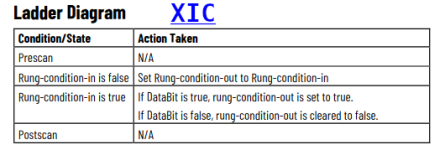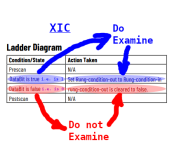Ron Beaufort
Lifetime Supporting Member
suggestion: first of all, please be gentle with your instructor ...
then ...
after you and your classmates - and your instructor - have watched all eleven of the YouTube videos mentioned above in this thread - IN NUMBER ORDER - your instructor is welcome to contact me directly if he thinks that a free one-on-one session by telephone might be helpful in making sure that everything is on the right track ... and I promise that I'll be gentle ...
I'm retired from teaching now - but America needs these skills ... I would be happy to provide some extra assistance if necessary ...
TIP: much of the trouble that you're experiencing is the result of using imprecise terminology ... it would be helpful to study definitions (1) through (5) in the following post:
http://www.plctalk.net/qanda/showthread.php?p=537418&postcount=2
note that you should NOT tackle the rest of that particular thread (on FORCES) at this stage of the game ... the figure given at the bottom of that same post might also be helpful ...
I wish you the greatest success in your journey ... and trust me - if you're not enjoying it, then you're doing something wrong ...
stay safe - stay well ...
then ...
after you and your classmates - and your instructor - have watched all eleven of the YouTube videos mentioned above in this thread - IN NUMBER ORDER - your instructor is welcome to contact me directly if he thinks that a free one-on-one session by telephone might be helpful in making sure that everything is on the right track ... and I promise that I'll be gentle ...
I'm retired from teaching now - but America needs these skills ... I would be happy to provide some extra assistance if necessary ...
TIP: much of the trouble that you're experiencing is the result of using imprecise terminology ... it would be helpful to study definitions (1) through (5) in the following post:
http://www.plctalk.net/qanda/showthread.php?p=537418&postcount=2
note that you should NOT tackle the rest of that particular thread (on FORCES) at this stage of the game ... the figure given at the bottom of that same post might also be helpful ...
I wish you the greatest success in your journey ... and trust me - if you're not enjoying it, then you're doing something wrong ...
stay safe - stay well ...







